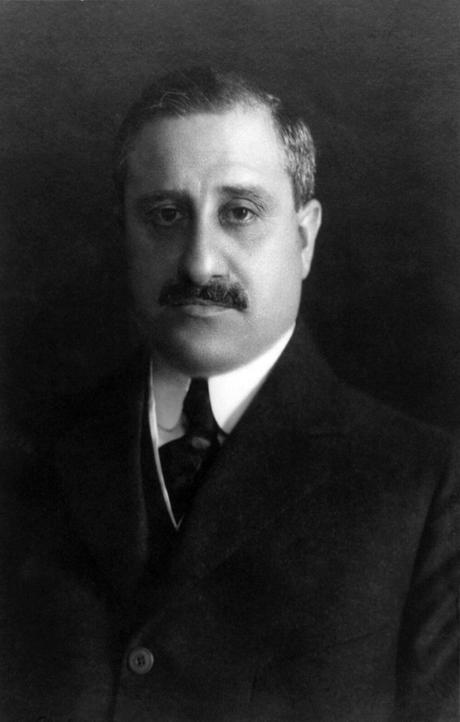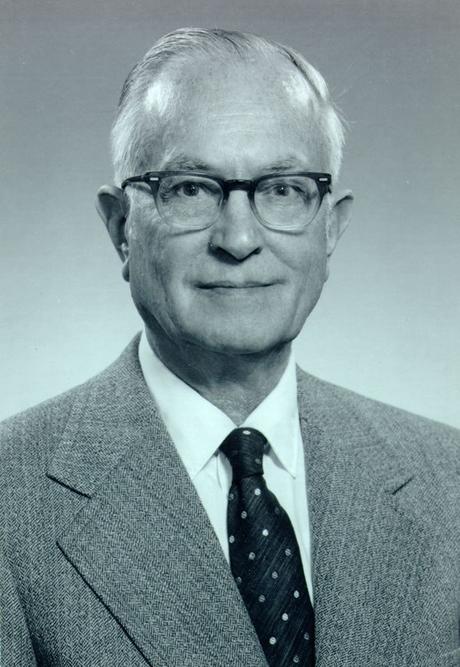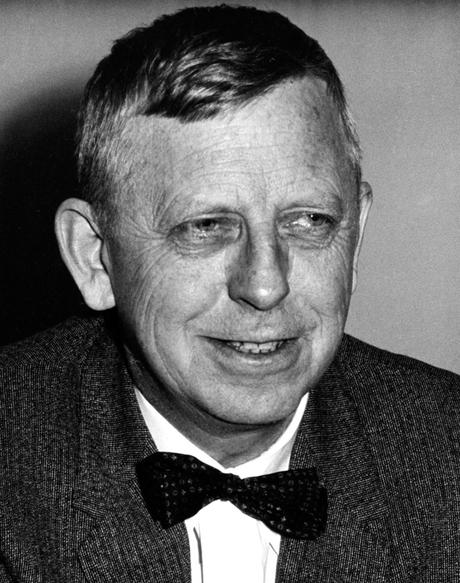 Simon Guggenheim
Simon Guggenheim[Ed Note: In much the same fashion as last year’s examination of Linus Pauling’s administrative work at Caltech, the Pauling Blog is once again going long form, this time with a detailed look at Pauling’s connections with the Guggenheim Foundation. This is the first post in a series that will occupy much of our schedule through the late Spring.]
Simon and Olga Guggenheim established the John Simon Guggenheim Memorial Foundation in 1925 to honor their son, who had died in 1922 just before he was to enter college. The Guggenheims’ intentions for this new foundation were “to improve the quality of education and the practice of the arts and professions in the United States, to foster research, and to provide for the cause of better international understanding.”
The Foundation aimed to do so by offering “promising scholars, both men and women, opportunities under the freest possible conditions to carry on advanced study and research in any field of knowledge, or opportunities for the development of an unusual talent in any of the fine arts, including music.” That charge supported fifteen fellows in the organization’s first year and forty-three in its second. Within its first decade, the Foundation had extended its ideals by supporting applicants from Latin America and Canada, in addition to the United States.
Shortly after setting up the Foundation, Simon Guggenheim stated that
It has been my observation…that just about the time a young man…is prepared to do valuable research, he is compelled to spend his whole time in teaching. Salaries are small; so he is compelled to do this in order to live, and often he loses the impulse for creative work in his subject, which should be preserved in order to make his teaching of the utmost value, and also for the sake of the value of the researches in carrying on of civilization.
Linus Pauling was one such beneficiary and his 1926 Guggenheim Fellowship proved to be a crucial step forward for both his career and, indeed, the arc of twentieth century chemistry. The experience likewise initiated a relationship with the Foundation, lasting several decades, that placed Pauling in a position to mold his own field and, to a lesser extent, American culture more generally.
In 1975, author John H. Davies, who was researching a biography of the Guggenheim family, asked Pauling to reflect on what his Guggenheim Fellowship had meant to his life. In response, Pauling described how he had been learning about quantum mechanics in the mid-1920s as a graduate student at the California Institute of Technology, but that the opportunity to meet both leading and emerging physicists in Europe gave him more confidence in his own ideas on the application of quantum theory to chemical problems. Much of his theoretical work that followed was based on those nineteen months in Europe, and the freedom granted by the Guggenheim Fellowship, especially when compared to the more restrictive grants offered by the Rockefeller Foundation, was just what he needed at the time.
Pauling also told Davies that in addition to Frank Aydelotte, who chaired the Foundation’s Committee of Selection from its first meeting in 1925 until 1950, Henry Allen Moe, the Foundation’s Secretary, was the most influential figure in shaping what the Foundation would ultimately become. Notably, from the start Moe made it his goal to know each and every Fellow. And indeed, when Linus and Ava Helen Pauling first arrived in New York before heading off to Europe in 1926, Moe invited them to stop by and see him, giving the young couple advice on how to navigate and best utilize their time overseas. Remarkably, during a forty-year tenure at the Foundation that saw the appointment of thousands of Fellows, Moe was largely able to achieve his goal to at least meet each selected individual. Moe and Pauling, however, developed an especially unique relationship over the years as the two became close colleagues and friends.
 Maurice Huggins
Maurice HugginsAfter Pauling completed his tenure as a Fellow, he quickly emerged as an important asset for Moe and the Foundation. When the search for new Fellows began in the fall of 1928, Moe wrote to Pauling asking for recommendations and ensuring him that they would remain confidential. This guarantee of confidentiality also extended to the many letters of reference that Pauling supplied for scores of applicants. Over time, Pauling’s judgments became central to the Foundation’s selection process, but early on, Pauling’s opinions did not always line up with final decisions on who received funding.
In 1930 Moe requested Pauling’s opinion of Maurice Loyal Huggins, then a Stanford professor and formerly a lab-mate of Pauling’s when the two were in graduate school at Caltech. Pauling’s reply was exacting in it assessment of both strengths and weaknesses, a characteristic that would remain consistent throughout Pauling’s professional life.
According to Pauling, Huggins was one of the top six chemists then looking at crystal structures in the United States. Pauling also told Moe that ever since Huggins had moved to Stanford, he had found it difficult to obtain funding. This, in turn, had affected his research, leading him to follow unfruitful lines focusing on organic crystal structures. But these issues did not dissuade Pauling from recommending Huggins. Instead, they seemed to highlight the strength of his proposed research on surface structures, which Pauling judged to be more appropriate to his talents. Pauling’s recommendation, however, was not enough for Huggins to be awarded a Fellowship.
Pauling also used his position as a Fellow to recommend those around him. Early on, in 1931, he put forth his assistant Boris Podolsky for a Fellowship to visit Albert Einstein in Berlin and Vladimir Fock in Leningrad, in both instances to discuss ideas on combining quantum theory and relativity. As was the case with Huggins, Pauling’s belief in Podolsky’s work was not enough to convince the Committee of Selection that he was worthy of a Fellowship.
 William Zachariasen
William ZachariasenIn other instances, Pauling’s negative assessments were not enough to prevent someone from receiving support. On one such occasion, in 1934, Moe wrote to Pauling asking if University of Chicago physicist William H. Zachariasen was a “first-rate scholar with a first-rate project.” Similar to Huggins, Pauling described Zachariasen as being among the top six crystal structure researchers in the United States and also the head of an important project on the structure of borates. On the same token, Pauling also pointed out that Zachariasen had already spent time with Viktor M. Goldschmidt in Gottingen and Lawrence Bragg in Manchester, and was likewise equipped with a good lab in Chicago. As such, Pauling concluded that Zachariasen, while indeed being “first-rate,” would not gain much from a return trip to Europe and recommended that he not be awarded a Fellowship.
In so doing, Pauling also took the opportunity to share his thoughts on the true value and impact of a Guggenheim Fellowship, an opinion that seems clearly to have been based on his own experiences as a Fellow.
It is my conviction that the Guggenheim Foundation can contribute more to the development of American scientists by awarding fellowships to able and promising young men (only two or three years beyond the Ph.D.) who can learn a new technique in a foreign laboratory or from a foreign professor and bring it back to America, or who can obtain training in one branch of knowledge which in combination with earlier training may lead to the development of a new field of research, rather than by awarding fellowships to mature first-rate scientists to enable them to prosecute definite research, except when the research is of great importance and requires the facilities of a foreign country for its prosecution.
Pauling’s conclusions with respect to Zachariasen and the mission of the Guggenheim Fellowships did not, in this instance, hold sway as Zachariasen was awarded the Fellowship.
But not all of Pauling’s instincts on potential fellows were at odds with those of the Foundation. By 1936, George W. Wheland and Pauling had worked together at Caltech for three years, enough time for Pauling to forecast his becoming “one of the leading university research men and teachers of the country.” By Pauling’s reckoning, Wheland was the only person in the world to be thoroughly trained in organic chemistry and to have mastered the principles of quantum mechanics. The only person close to Wheland’s caliber was Erich Hückel in Stuttgart, but he did not possess the same depth of training in organic chemistry.
Prompted by Pauling’s encouragement, Wheland submitted an application for a 1936-1937 Fellowship. In it, he outlined plans to visit Christopher K. Ingold at University College London, and Robert Robinson and Nevil Sidgwick at Oxford. In his letter of support, Pauling pointed out to Moe that Wheland was the first applicant to apply from Caltech’s Chemistry Division since Pauling had received his own award some ten years prior, perhaps implying in the process that the Division was due. This time the Committee of Selection agreed and, one year later, Caltech and Pauling enjoyed another success when nominee Lawrence O. Brockway also received funding.
As Pauling’s judgements came more and more in line with those of the Foundation, Moe and others began to take notice. That attention would earn Pauling a place on the Guggenheim Advisory Board in 1939 and, not long after, on its Committee of Selection.
